Ever wonder how it's possible that you can look like an exact clone of your Aunt Sally, but look nothing like your own sister? Or how a paper cut magically heals on its own?
The answer to both these mysteries lies in our chromosomes — specifically homologous chromosomes and sister chromatids. While these terms are often confused, they play different roles in how our bodies grow, heal, and inherit traits.
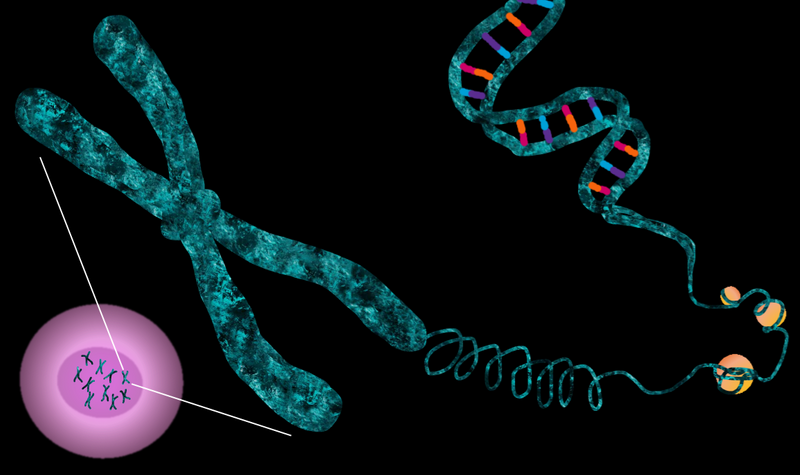 Image by Phyllis Ung
Image by Phyllis Ung
Unravel the difference between homologous chromosomes and sister chromatids!
Let's Review Chromosomes!
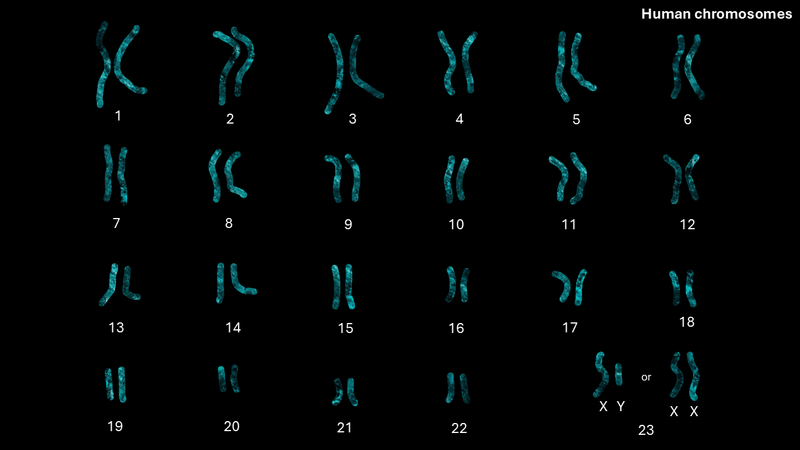 Image by Phyllis Ung
Image by Phyllis Ung
Chromosomes are thread-like structures in the nucleus of plant and animal cells. They are made up of protein and DNA, which carries genetic information that makes each organism unique. Every plant and animal species has its own set number of chromosomes.
Each "diploid" or body cell in the human body contains 23 pairs of chromosomes or 46 chromosomes in total. We inherit half from each of our biological parents, passing down similar traits such as appearances and genetic conditions.
The image above is a human karyotype.A karyotype is a picture of all the chromosomes from one cell of an individual.
What Are Homologous Chromosomes?
Homologous chromosomes are matched pairs of chromosomes (one inherited from the mother and one from the father) that have the same size, shape, and genes, but may carry different versions (alleles) of those genes.
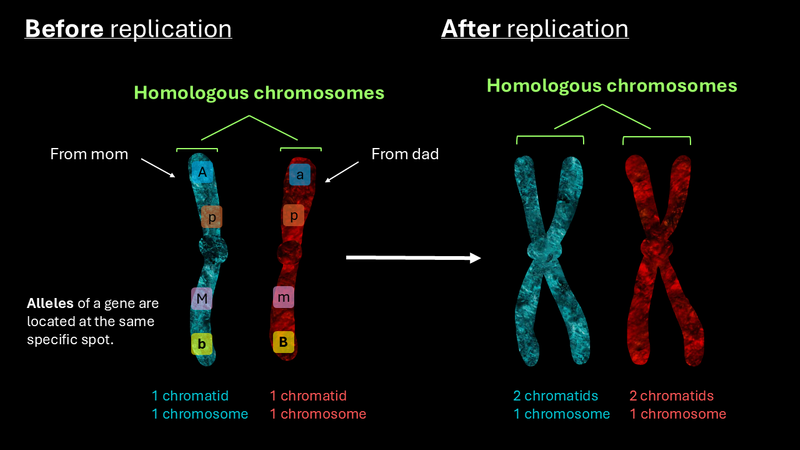 Image by Phyllis Ung
Image by Phyllis Ung
Remember, human cells have 23 pairs of chromosomes. In each pair, the two chromosomes are called homologous chromosomes because they carry the same kinds of genes in the same order (the only exception is the X and Y pair, which are a special case). Since one chromosome copy is from your mom and one is from your dad, the alleles you get may be different.
For example, you might get a blue eye allele (b) from your mom and a brown eye allele (B) from your dad at the same gene location. This mix of alleles is what makes everyone genetically unique!
Check out the video below for a detailed explanation from a biology teacher:
Practice: Identify the Homologous Pair!
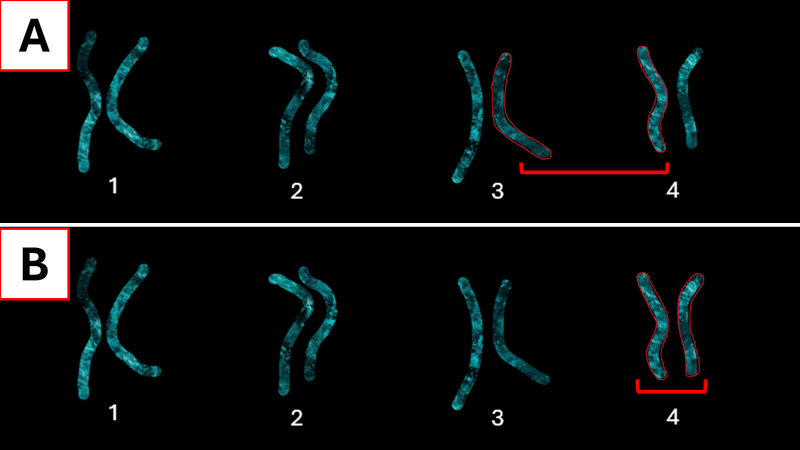 Image by Phyllis Ung
Image by Phyllis Ung
The images above show chromosomes 1 through 4 from the human karyotype. Image A highlights one copy each of chromosomes 3 and 4, while Image B highlights both copies of chromosome 4.
Quiz
Which image above (A or B) correctly highlights the homologous pair?
What Are Sister Chromatids?
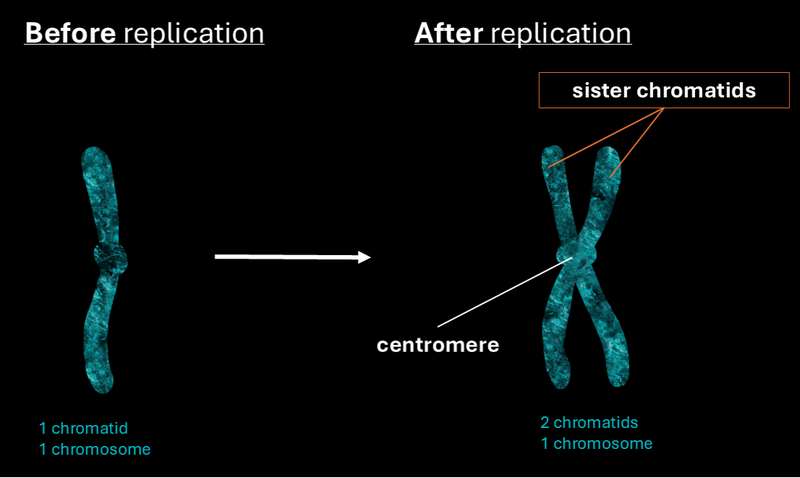 Image by Phyllis Ung
Image by Phyllis Ung
Sister chromatids are identical copies of a chromosome formed from DNA replication. Two identical chromatids are connected at the centromere, which is a constricted region of a chromosome that plays an important role in helping the cell divide.
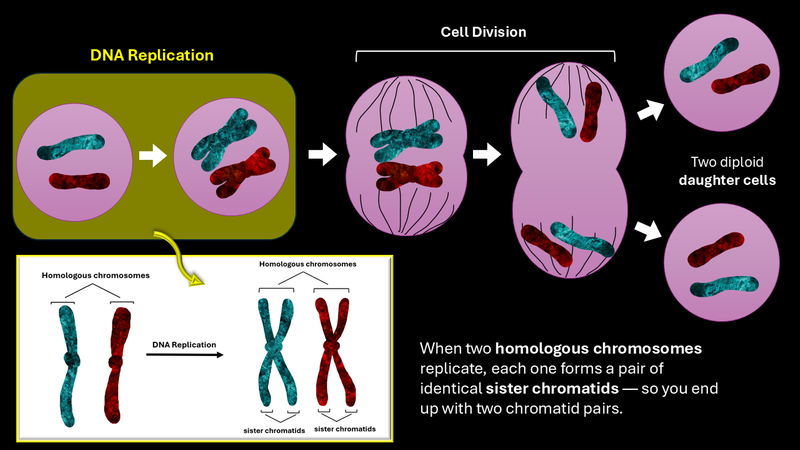 Image by Phyllis Ung
Image by Phyllis Ung
Before a cell can divide to create more cells, it will copy its chromosomes through DNA replication to create two identical copies of its DNA to go into each "daughter" cell.
This process ensures that each new cell gets an exact DNA copy. This is crucial for organisms to maintain their genetic information accurately during growth, repair, and reproduction.
Quiz
Challenge! After DNA replication, how many chromatids are present in a pair of homologous chromosomes? (Hint: Use the image above)
Recap: Difference Between Homologous Chromosomes and Sister Chromatids
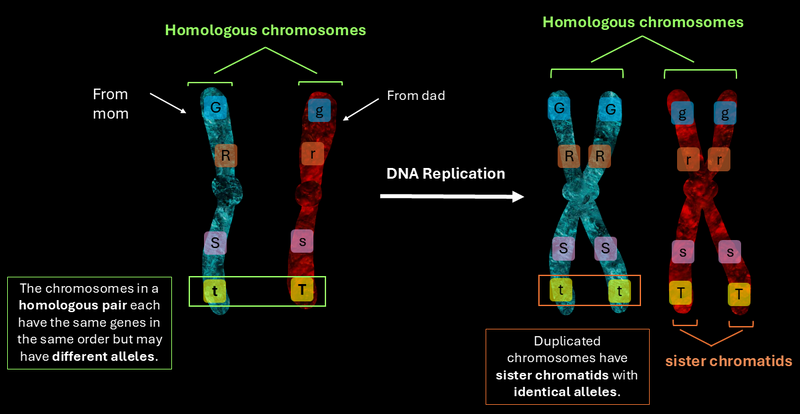 Image by Phyllis Ung
Image by Phyllis Ung
Homologous Chromosomes
Pairs of chromosomes (one from each parent)
One chromosome is inherited from each parent during sexual reproduction
Similar but not identical (carries same genes, but potentially different alleles). Example: Two copies of chromosome 1, one from each parent
Sister Chromatids
Identical copies of a single chromosome joined at the centromere
Created during DNA replication
Genetically identical. Example: Two identical copies of chromosome 1 after replication
Here's another explanation from a biology teacher:
Quiz
True or false? Homologous chromosomes are identical to each other because they are copied during DNA replication.
Take Action
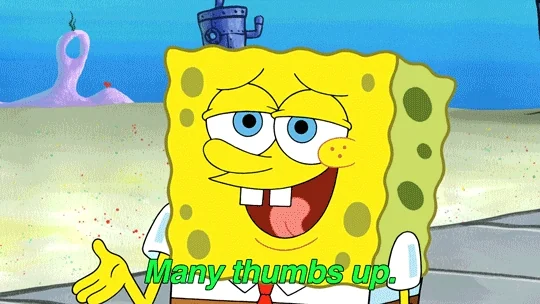
Great job! 🎉 You’ve got success coded into your DNA! 🧬
Your feedback matters to us.
This Byte helped me better understand the topic.
